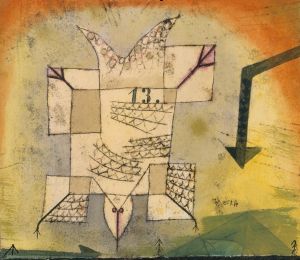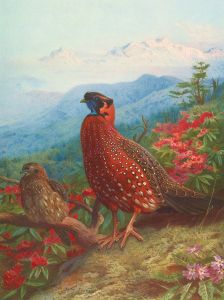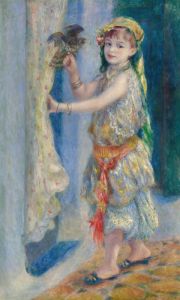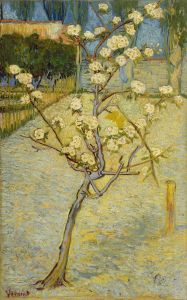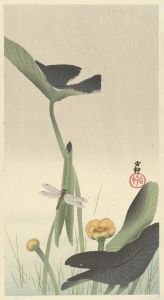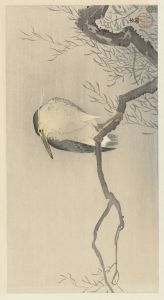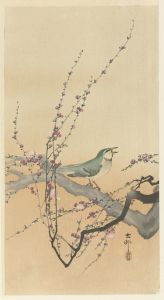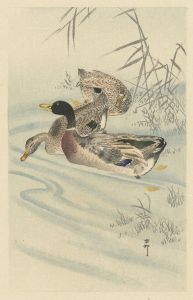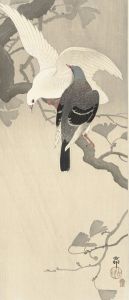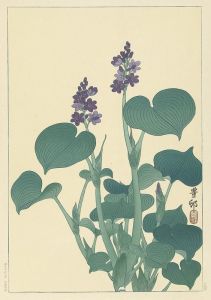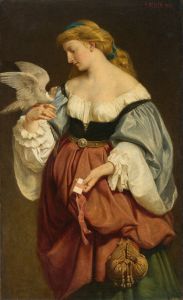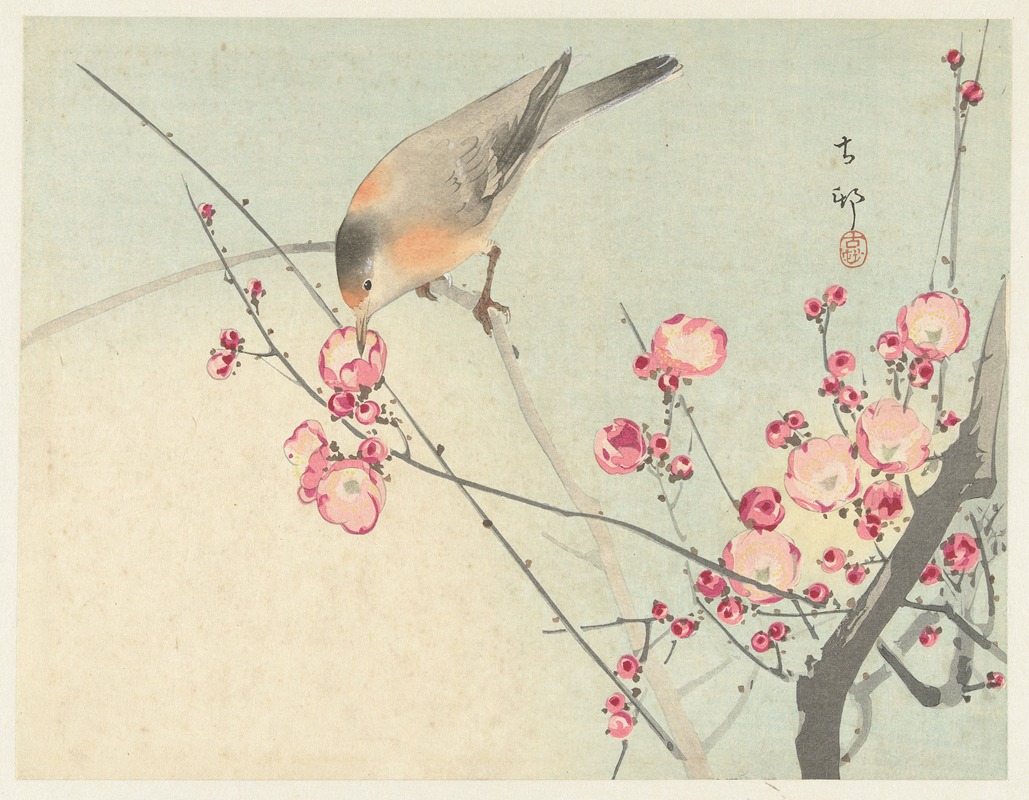
Songbird on blossom branch
A hand-painted replica of Ohara Koson’s masterpiece Songbird on blossom branch, meticulously crafted by professional artists to capture the true essence of the original. Each piece is created with museum-quality canvas and rare mineral pigments, carefully painted by experienced artists with delicate brushstrokes and rich, layered colors to perfectly recreate the texture of the original artwork. Unlike machine-printed reproductions, this hand-painted version brings the painting to life, infused with the artist’s emotions and skill in every stroke. Whether for personal collection or home decoration, it instantly elevates the artistic atmosphere of any space.
Ohara Koson (1877–1945) was a prominent Japanese artist known for his exquisite woodblock prints, particularly those depicting birds and flowers, a genre known as kachō-e. His work "Songbird on Blossom Branch" is a fine example of his mastery in capturing the delicate beauty of nature through the traditional Japanese woodblock printing technique.
Koson was part of the shin-hanga ("new prints") movement, which sought to revitalize traditional ukiyo-e art by incorporating Western elements such as perspective and shading while maintaining the quintessentially Japanese themes and techniques. This movement emerged in the early 20th century as a response to the declining popularity of ukiyo-e, and it aimed to appeal to both domestic and international audiences.
"Songbird on Blossom Branch" exemplifies Koson's ability to blend realism with the stylized elegance characteristic of Japanese art. The print features a small bird perched on a branch adorned with blossoms, capturing a moment of serene beauty. Koson's attention to detail is evident in the intricate rendering of the bird's feathers and the delicate petals of the blossoms. The composition is balanced and harmonious, with the bird and blossoms set against a subtle background that enhances the overall tranquility of the scene.
Koson's work is often celebrated for its use of color and texture, achieved through meticulous carving and printing techniques. In "Songbird on Blossom Branch," the colors are soft and natural, reflecting the gentle hues of the natural world. The use of gradation and shading adds depth to the image, giving it a lifelike quality that draws the viewer into the scene.
Throughout his career, Koson produced a vast number of prints, many of which featured birds as their central subject. His fascination with avian life is evident in the diversity of species depicted in his work, each rendered with a keen eye for anatomical accuracy and an appreciation for their unique characteristics. This focus on birds aligns with the traditional Japanese appreciation for nature and its transient beauty, themes that are deeply rooted in the country's artistic and cultural heritage.
Koson's prints were highly sought after by collectors, particularly in the Western world, where there was a growing interest in Japanese art during the early 20th century. His works were often exported to Europe and America, where they were appreciated for their aesthetic qualities and the glimpse they offered into Japanese culture.
Despite the challenges faced by the shin-hanga movement during its time, including competition from modern art forms and the impact of World War II, Koson's work has endured and continues to be celebrated today. His prints are held in high regard by art historians and collectors alike, and they are featured in numerous museum collections around the world.
In summary, "Songbird on Blossom Branch" by Ohara Koson is a testament to the artist's skill and his ability to capture the ephemeral beauty of nature. Through his work, Koson has left a lasting legacy that continues to inspire and captivate audiences, reflecting the timeless appeal of Japanese woodblock prints.





